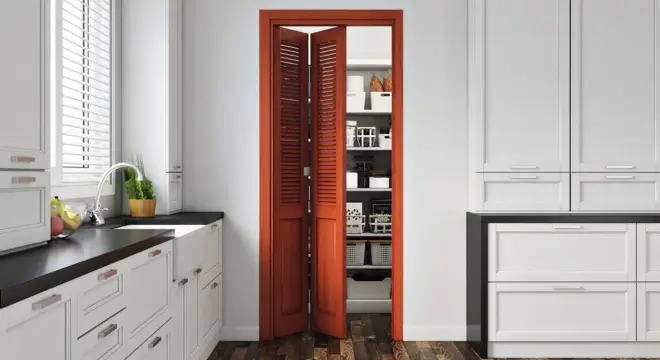Step-by-Step Guide to Removing Sliding Closet Doors: Easy Solutions and Tips
Are you wondering about the removing of sliding closet doors? Are you tired of fiddling with hidden tools, gliding tracks that won’t budge, and heavy-old doors? Well, l guess, this guide is here to free you from steps exasperatedly.
While removing sliding closet doors may seem simple, many find it trickier than they bargained for. Whether you’re replacing the old doors for new or simply want easier access to your closet, this guide walks you through every step. We’ll show you how to remove the doors safely, what tools to have at your side, and common pitfalls to avoid.
So if removing sliding closet doors was killing your zest, this guide should build your confidence to make it a breeze. So, grab your tools and let’s get started!
Tools and Materials You’ll Need
Before you begin the actual removal of sliding closet doors, it is very important to have the listed tools ready for use:
Essential Tools:
- Screwdrivers (flathead and Phillips): To loosen screws on tracks, door brackets, and from other components.
- Pry Bar: With its help you will remove the door and track with gentle prying.
- Hammer: For tapping the pry bar or other tools into place.
- Putty Knife: Great to scrape adhesive or caulk out from around the tracks.
- Utility Knife: For cutting through, say, caulk, or trimming a stubborn glue seal.
- Gloves: Protect not only against sharp edges but also debris.
- Safety Glasses: Always protect your eyes when working with tools or working with material that may produce debris.
- Lubricant (WD-40 or silicone spray): Helps loosen components that tend to stick on one another, such as tracks.
- Tape Measure: Useful for measuring door and checking if everything else fits in case new doors are being fitted.
- Drill (optional): To unscrew fasteners or remove tracks, should they pose a problem.
Alternating Tools:
- In the case of stubborn tracks, tapping them with a hammer and wooden block can allow them to loosen without damaging them.
- Cutting through (if necessary): You might need to resort to using a hacksaw to cut through more stubborn materials, such as a track.
Preparing for the Removal Process
Before taking your sliding closet doors off the track, it is very essential to protect your area and yourself from the risk of injuries that may cause damage.
Protect Your Area
- Put a Cloth or Drop Cloth: This will save the floor from being scratched, dented, and otherwise damaged in the process.
- Protect Glass Doors: If they are glass doors, cover them with a padded blanket or other soft cloth so they don’t break or get scratched while moving them.
Safety First
- Wear Gloves: To protect your hands from sharp edges or rough surfaces while handling the doors or any metal parts.
- Wear Protective Eyewear: Always use safety glasses, especially when working with tools like screwdrivers and drills or prying parts apart. This will protect your eyes from flying debris.
- Wear Closed-Toe Shoes: This is a must for any project that requires heavy lifting or requires tool use, as it makes it less likely that you could be injured by something heavy that falls on your feet.
Step-by-Step Guide to Removing Sliding Closet Doors
A. Identify Your Type of Sliding Door
Before starting, knowing sliding closet door types is important. That will decide how to remove the door.
- Top-Hung Doors: These doors hang from overhead tracks. They have brackets or rollers at the top and will need to be lifted off first from the top.
- Bottom-Rolling Doors: These doors roll on a bottom track and can usually be lifted off more easily because you can go right to the bottom of the door and stub your foot .
Locking Mechanism Check
- Before removing the sliding door, check for locking pins or adjustable screws which would need to be temporarily loosened. Be sure to check for these so that you will not damage the door or touch the door.
B. Loosening and Adjusting the Door
With the nature of your door sorted, it is time to get the door ready for removal.
- Mixed-Up and Buckled-Up the Track: If there are screws, pins, or adjustment knobs for your door, loosen them so that you may be able to take them down easily.
- Adjust the Height of the Door: Set the door’s height to make it easier to lift and remove, particularly for top-hung doors.
C. Raising and Unfastening the Door
This is the most important aspect of the entire process.
- Lift the Door Up: Carefully lift the door up to detach it from the track. Go slow, for a quick motion could damage the track or the door itself.
- Tip: Heavy doors should be lifted with great care. It’s advisable to ask for help or use the proper lifting techniques to avoid injury.
- Sliding the Door Off the Track: After giving a pull, gently slide the door away from this spot or the track. If the door appears to be stuck, don’t force it! Use a pry bar or a little lubricant (WD 40 or silicone spray) to loosen the grip of the door on the track.
D. Removing the Track (Optional)
If you want to remove the tracks for any reasons, including replacing them, consider the following steps:
- Removal of Tracks: Unscrew the fasteners holding the top and bottom tracks in place with a drill or screwdriver.
- Warning: When removing the tracks, it is necessary to exercise great care that the adjoining wall or floor is not damaged. Placing down a protective cloth will help catch screws and debris that fall during the removal process.
Troubleshooting Common Issues
Sometimes things take an unexpected turn during a removal process. Here are some common problems encountered that will help you take the sliding closet doors off the track.
Door Won’t Come Out of Track
If the door is giving you a hard time getting out of the track, try a few of the following methods:
- Lubricate the Track: If your door feels jammed or too tight, spray WD-40 or silicone spray onto the track. This will loosen any debris or rust building inside and help you lift and remove the door more easily.
- Adjust the Height: Look for height screws on the door or track. Adjusting these screws can often make it easier to lift the door out of the track, as the door will then sit at a better height for removal.
- Use a Pry Bar: If that doesn’t work, gently insert a flat pry bar underneath the door and try to lift or wedge it off the track. Pressure should be applied slowly; you really don’t want to cause any damage to the door or track.

Roller or Track Damage
The problem may involve either the roller or the track that is damaged. Here’s what you can do:
- Broken Rollers: The broken rollers may be replaced quite easily. New replacement rollers may be readily found in most hardware stores. Remove the broken rollers and replace them with new ones, so that future operation of the door is smooth.
- Bent or Damaged Tracks: If the tracks are either bent or damaged, here are your options:
- Straightening the Tracks: If the damage is complaining, gently straighten the track either with pliers or a hammer.
- Replacement of Tracks: In the case of more severely damaged tracks, it may be best to replace the entire track. In order to remove the stubborn track, a hacksaw may be needed to cut through the bent or damaged portions
Cleaning and Maintaining Sliding Closet Doors
With proper cleaning and maintenance, sliding closet doors could serve you with improved service by operating smoothly and working for you longer. Here are some tips on cleaning the doors for improved functionality.
How to Clean Tracks and Rollers
- Vacuum the Tracks: Use a vacuum to remove dirt, dust, and debris caught inside the tracks. Such dirt buildup will frequently result in the stall and rattling of the sliding mechanism.
- Wipe Clean the Rollers: If the rollers on either side of the door are grimy or dirty, get a damp cloth and wipe the surface of the rollers. For this cleaning method, make sure the surface of the rollers is dry afterward to avoid rust formation.
- Lubricate the Rollers: After cleaning the rollers, spray with a little silicone spray or WD-40, to lubricate the wheels. Keep the wheels rolling on their guide rail smoothly and quietly. It prolongs the life of wheels considerably
Preventing Future Issues
- Cleaning tracks regularly: Make sure to clean the tracks of your sliding door every 6 months. Regular cleanings ensure no buildup of dirt and easy sliding of the door.
- Lubricating rollers and tracks: Rub some oil on the rollers and also the tracks somewhat regularly to prevent wear and tear. It helps to keep the door functional so that it works smoothly and quietly with time.
Alternatives to Sliding Doors
If you’re considering a change from sliding closet doors or just want to explore other options, there are several alternatives that can provide both functionality and style. Here are some ideas:
Bifold Doors
- Great for Small Spaces: Bifold doors are a fantastic option if you have limited space but still need easy access to your closet. They fold in half, allowing for wider openings without requiring the space of traditional doors.
- Quick and Easy Installation: Bifold doors are relatively easy to install, making them a perfect choice for those looking for a modern update to their closet with minimal effort.
Open Closet Shelving
- Minimalistic Touch: To transform space, an open closet with open shelving or a hanging system instead of closed can provide a more open and lighter feel to this amazing space. Makes it easy accessibility for clothing within a modern minimalist aesthetic.
- Stylish Alternative: Open shelving also provides room to showcase decorative items, which adds a personal touch to the closet space.
Curtains or Barn Doors
- Budget Friendly and Stylish: If you want a quick and affordable option, curtains or barn doors can replace closet doors. Easy to install, they can be a decorating option with a rustic or modern touch.
- Flexibility in Design: These other alternatives give good flexibility. Curtains can be used in place of various styles, colors, or patterns, and barn doors can offer unique rustic charm. They would work great if you want space-saving, customizable design.
FAQs
1. How do you take a sliding closet door off?
This is explained in the “Step-by-Step Guide to Removing Sliding Closet Doors” section. It outlines how to lift and slide the door out of the track safely.
2. How do you remove a sliding door from its track?
This is covered in the “Sliding the Door Off the Track” step. We provide tips on how to use a pry bar or lubricant to loosen the door if it’s stuck.
3. How to remove a top-hung sliding door?
In the “Top-Hung vs. Bottom-Rolling” section, we walk you through the process for removing top-hung doors. You’ll need to remove the anti-jump clips first and then lift the door off the track.
4. Can you remove a sliding glass door?
Yes! The removal process for a sliding glass door is very similar to regular sliding doors. However, extra care should be taken to handle the glass properly for safety reasons.
5. How do you remove a sliding screen door from tracks?
The technique is similar to that of regular sliding doors, but first, you may need to remove the screen rollers or sliding mechanism before lifting the door off the track.
6. How do you remove a vertical sliding window from a track?
For vertical sliding windows, disengage any locks and adjust the height if necessary. Then, carefully lift the window out of the track. This is similar to the sliding door process but requires more attention to the vertical track.
7. How to get a sliding door back on track?
This is addressed in the “Getting Back on Track” section. It explains how to realign the rollers and tracks to restore smooth sliding operation.
8. How do you remove a roller from a sliding screen door?
In the “Roller or Track Damage” section, we explain how to remove or replace a broken roller. It’s a simple process that involves lifting the screen door and replacing the damaged rollers with new ones.
Conclusion
Removing sliding closet doors doesn’t have to be complicated! With the right tools, preparation, and a step-by-step guide, you can easily tackle the job and update your space. Whether you’re dealing with stubborn tracks or considering a new door alternative, the key is to take it step by step and stay safe.
Need help or have more questions? Feel free to reach out to me on Twitter and Facebook—I’m happy to assist or chat!
Also, don’t forget to join the conversation on WhatsApp groups to share your tips or get advice from others!


